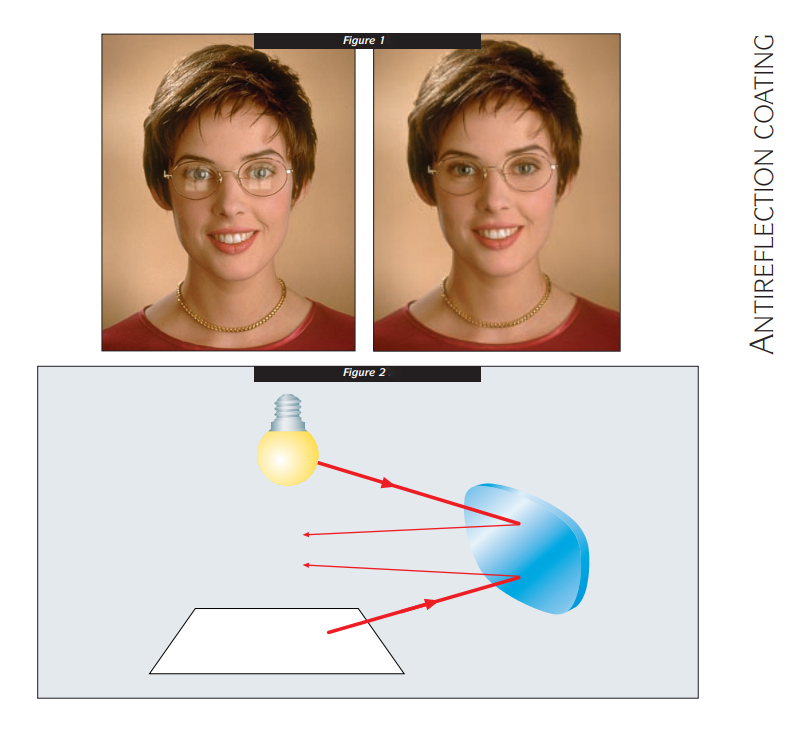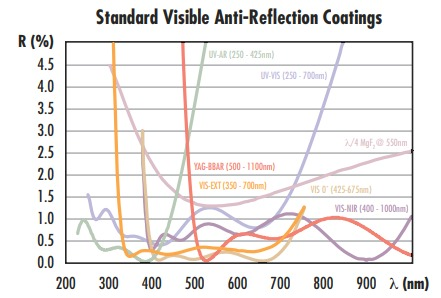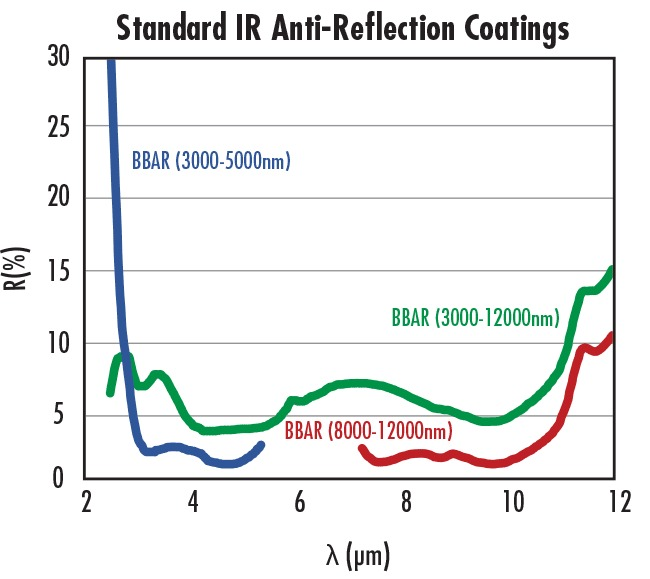Home > NEWS > Optical Coating: AR Ccoating
An optical coating is one or more thin layers of material deposited on an optical component such as a lens, prism, or mirror, which alters the way in which the optic reflects and transmits light. These coatings have become a key technology in the field of optics. One type of optical coating is an anti-reflective coating, which reduces unwanted reflections from surfaces and is commonly used on spectacle and camera lenses. Another type is the high-reflector coating, which can be used to produce mirrors that reflect greater than 99.99% of the light that falls on them. More complex optical coatings exhibit high reflection over some range of wavelengths, and anti-reflection over another range, allowing the production of dichroic thin-film filters.
Anti-reflection coatings are used to reduce reflection from surfaces. Whenever a ray of light moves from one medium to another (such as when light enters a sheet of glass after traveling through the air), some portion of the light is reflected from the surface (known as the interface) between the two media.
A number of different effects are used to reduce reflection. The simplest is to use a thin layer of material at the interface, with an index of refraction between those of the two media. Such coatings can reduce the reflection for ordinary glass from about 4% per surface to around 2%. These were the first type of anti-reflection coating known, having been discovered by Lord Rayleigh in 1886. He found that old, slightly tarnished pieces of glass transmitted more light than new, clean pieces due to this effect.
Practical anti-reflection coatings rely on an intermediate layer not only for its direct reduction of reflection coefficient but also use the interference effect of a thin layer. If the layer's thickness is controlled precisely such that it is exactly one-quarter of the wavelength of the light in the layer (a quarter-wave coating), the reflections from the front and back sides of the thin layer will destructively interfere and cancel each other.

Figure 1: Lens surface reflections
Figure 2: “Mirror” effect of an uncoated lens (on the left).


Oplens has been committed to providing customers with high-precision optical system solutions over 16 years, covering the complete manufacturing process from the design, processing and assembly of various optical components and mechanics. Contact us for more info!
SPIE Photonics West Exhibition: 20 – 22 January 2026
Dec. 19, 2025Laser World of Photonics 2025 Munich
Jul. 08, 2025OHARA High Quality Quartz Fused Silica SK1300 Glass Lens
May. 21, 2025